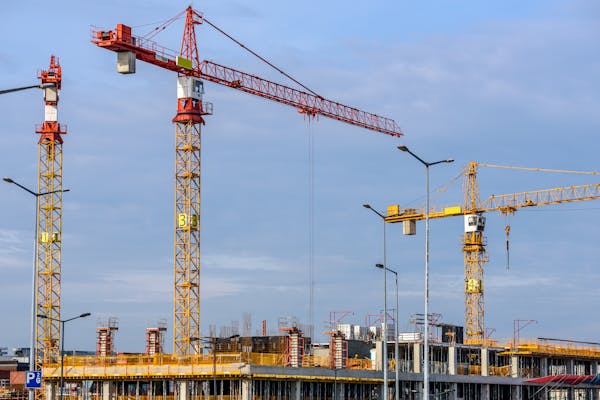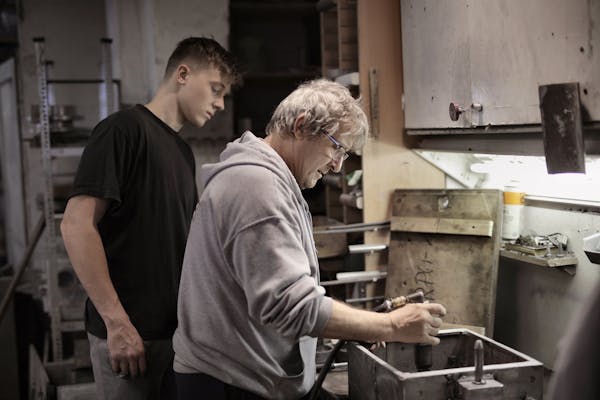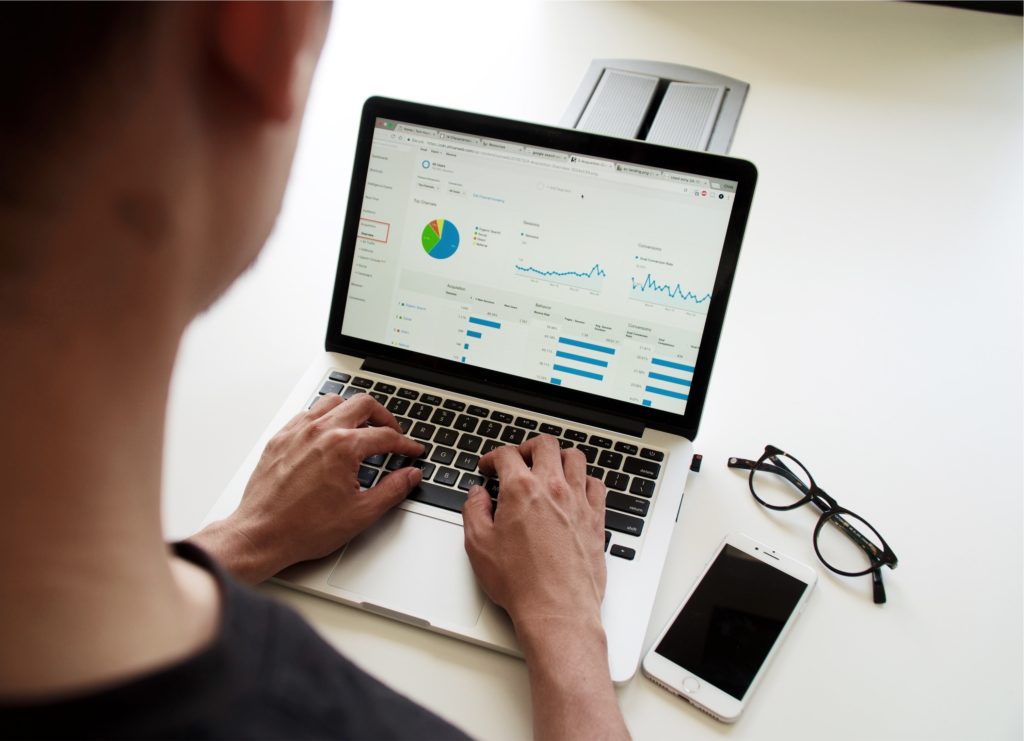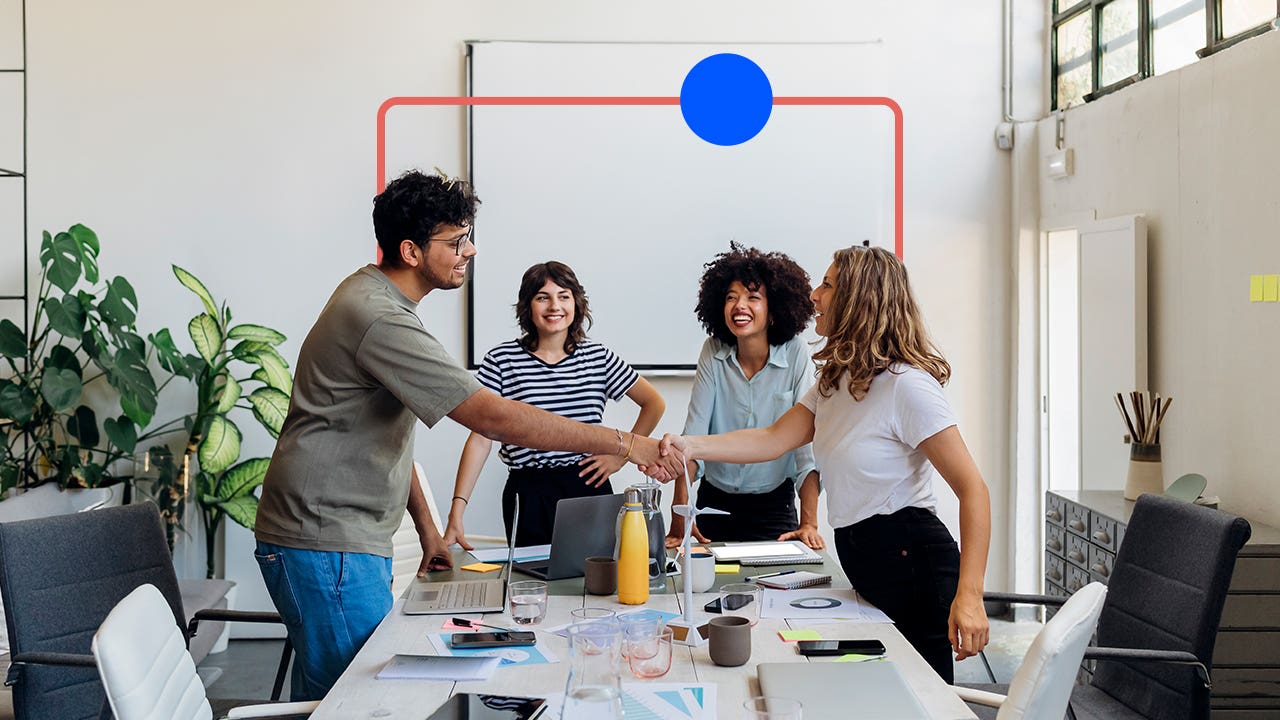Hershey CEO Michele Buck on Empowering Internal Change Agents
[ad_1]
Michele Buck is the first female CEO in The Hershey Company’s history, and the company has been recognized as one of America’s most female-friendly corporations. She also has a rich personal story, coming from humble roots in central Pennsylvania, and she worked her way through college before getting an MBA.
HBR editor in chief Adi Ignatius sat down with Buck in this episode of our video series “The New World of Work” to talk about:
- Leadership innovations she’s made at Hershey like tapping internal change agents.
- Serving customers during the height of the pandemic.
- Advice for helping women make progress in the workforce.
“The New World of Work” explores how top-tier executives see the future and how their companies are trying to set themselves up for success. Each week, Ignatius interviews a top leader on LinkedIn Live — previous interviews included Microsoft CEO Satya Nadella and former PepsiCo CEO Indra Nooyi. He also shares an inside look at these conversations —and solicits questions for future discussions — in a newsletter just for HBR subscribers. If you’re a subscriber, you can sign up here.
ADI IGNATIUS: Welcome, Michele.
MICHELE BUCK: Thank you very much.
ADI IGNATIUS: Tell us a little bit about your personal journey that took you to the top of The Hershey Company.
MICHELE BUCK: Absolutely. I would say interestingly, I think there are some parallels between my personal journey and the journey of The Hershey Company, because both are really rooted in strong values being at the core of what led me to where I am and the company to where it is. I give a lot of credit to where I am from the influence that I had from my family, my friends, and my environment growing up. I was instilled very early with several key values by my parents, and that was in the approach of the value of hard work, being nice, appreciating that everyone has something to contribute, being humble, and taking great satisfaction in personal achievement.
I came from humble beginnings. My mother grew up on a farm with no indoor plumbing. My grandparents dropped out of school in seventh grade and were taken care of by their older siblings. My dad was the first person in his family to get a high school diploma. He then went in the service and actually went on to get a college degree on his own. Early on, I think I leveraged some of that value of hard work, and I started doing jobs very early on, first a paper route, babysitting, waitressing, selling Avon door to door, working in retail, working in banking, and what I found out about myself was I loved to learn. I loved all of those different experiences, and each one taught me something very new and different. I learned through those firsthand, the value of hard work, and the independence that it gave me, and the sense of achievement.
I was always a good student. When I went to think about college, I needed to pay for my own undergraduate education, so I went to a local state school, Shippensburg University, and worked 20 hours a week to pay for that. I worked a few years coming out of college, and then I decided to get an MBA, really to open doors to have more options, and I chose UNC Chapel Hill, a top 10 school, but one that was very focused on teamwork as one of its core principles, and that was a lot about what I am all about, so it was a really good fit.
Following that, I’ve had a long history in the blue chip consumer packaged goods companies, starting at Frito-Lay, going to Kraft, General Foods, Nabisco, and then Hershey’s. If I think about all of those years, I would say that there were two things key to the assignments that formed me to be who I am. One was: I always went after an assignment where I could do something I had never done before, a little bit scary, but something that was really exciting. I also, in each assignment, focused on how I could leave it better than it had been in the past, and a lot of times, I found that meant transformation, transforming the business or the opportunity.
A few examples of some of those experiences very early on in brand leadership, if I first worked on a low-margin business, I would then work on a high-margin business. I created a new season on the Cool Whip brand, 4th of July, based on some consumer insights that I learned about the head of household, female head of household, who is using that product, and wanted a hero impact, but with not much effort.
My first general management experience, I was given a plant that was a Teamsters Union plant, not performing well, was going to be shut down, and my challenge and opportunity was could I accelerate that business by turning around the plant. It was an amazing experience, because I had no technical manufacturing knowledge, but through being resourceful, and through being a good leader and a good listener, I was able to work with the plant employees, put in place participative management, and turn the plant around. That was one of the greatest rewards I ever got in my career, was an award the plant workers gave me, which was a plaque they handmade, “Congratulations on your promotion. Our loss is their gain.”
I had a second general manager job that was running a business when I was at Kraft, that was pretty much disconnected from most of Kraft’s main systems of sales channels or their manufacturing network, so that gave me a lot of responsibility. I was given responsibility to run a divestiture early in my career, of a business, all on my own, working with the investment bankers, something I had never done before, and then here at Hershey, when I first came, I had the opportunity to be one of the key architects of transforming our business model to be a brand-building model, taking our advertising from 2% of net sales to about 9%.
All of these situations really led to, I’d say, breakouts on those businesses, and also breakouts in my skillsets, that I think led me to today, which is: I focus a lot on thinking about transformation and disruption as an opportunity, really setting clear vision, taking bold, courageous decisions, listening to people, and learning as I go, and adjusting.
ADI IGNATIUS: That is a great answer. I feel like I know you a lot better. About five years ago, you become president and CEO of the company. You’d started to talk in general terms about transformation, but talk more about what you wanted to accomplish. You come to this very successful, long-running company, but you want to bring your own stamp to it, you want to change. What did you set out to do?
MICHELE BUCK: I believe the world is rapidly changing, and I think we see that every single day. It is changing faster than ever, and I believe that to continue to thrive, even if you have many great things you’re doing as a company, you can’t stand still. That will not be success, so I really looked at where’s the opportunity for us to transform, to accelerate top-line growth, and also to create a sustainable future for the company? As I looked at that, I set out a vision for us to be an innovative snacking powerhouse. Hershey was already number one in confection, and confection is the second biggest category within snacking, and by virtue of that, we were actually the number two snacking player.
We had a number of core capabilities, including taste science, ubiquitous distribution, consumer insights, that could transfer much more broadly than to just our confection business, and could actually take our confection business to the next level as well. So I set the vision, innovative snacking powerhouse.
I decided there were really four key strategies that we needed to focus on to deliver that. First of all, I wanted to accelerate growth on our core US confection business, the bread and butter of our business. It was responsible for most of our sales and definitely all of our profit at the time, but we needed some new thinking to really accelerate growth and take it to the next level. And we focused on a few things within that business, including better balancing the core and innovation, implementing new pricing levers, etc.
We expanded our portfolio by really dialing up mergers and acquisitions to play more broadly across snacking. So over the past five years, we bought SkinnyPop Popcorn, Pirate’s Booty, more recently, Dot’s Pretzels. So really expanding our portfolio.
The third strategy was to make our international business profitable. International had always been a growth engine for us. We had gone from a pretty nascent position. And so the first goal was really to drive top line, but we had now gotten to a sizable business that just was not making money. The real focus there was to become profitable, which required some big changes. It required changing our business model in certain markets, even required some bold decisions like unwinding an acquisition that we had made that had not turned out so well for us.
And then my fourth strategy in the vision was to further accelerate our culture. Hershey has an amazing culture. One of the things I love about the company, great people, hardworking, salt of the earth, values, integrity, people who want to make a difference both in the company and in their communities, very team focused and people focused. But I saw an opportunity for us to dial up our agility and our risk-taking, so that we could better seize opportunities.
And that last strategy really involved some changes in thinking about leadership and what we valued and our talent. And it revolved [around] leaning upon looking for some of the influencers in our organization who were disruptive thinkers, who were bold risk-takers, and really leveraging on them on some of these key initiatives that were big and bold to really help get the momentum going to execute them.
And I’m pleased to say that we had very strong results over the past five years in executing against the strategies, really accomplishing each, and as a result, we’ve been able to double our market cap in the past five years. So very pleased with where we’ve landed on that, and the capabilities that we built along the way.
ADI IGNATIUS: I’m interested in what you said about trying to tap into the bold thinking of some of your employees. Can you talk a little bit more about that, what you mean exactly? How do you identify those people and how do empower them to have more agency in the strategy?
MICHELE BUCK: There are many people, and maybe even most people don’t love change. They don’t love the idea of big transformation and taking big risks because obviously there can be downside. And what I did was I looked across the organization, and I saw people who had shown evidence of having an ability to some combination of being able to see the future and see where trends were headed, to really think about what some of our greatest strengths were as a company, and how we might fully leverage them. There were people who epitomized some of the greatest strengths in our culture, and were really respected by the organization.
I looked at some of those folks, and many of them were not at the very top executive level, and I really pulled them up and then put them into a group. I kind of formed nine of them together, and identified to them why they were chosen, and then put them to work on some of these big initiatives that we were trying to achieve. And made sure that we listened to their thinking on this, because I think a lot of times those really disruptive thinkers can get shut down.
And then they also paired some of the folks who were disruptive with folks who were really amazing executors, because the power of having somebody who’s a really big thinker and partnering them with somebody who’s just an excellent commercial operator can be incredibly valuable in not only getting the great ideas, but then making sure that we have the right plans to execute them flawlessly.
ADI IGNATIUS: I’m curious how the pandemic, the last couple years, has affected your business for good or for bad. And in terms of supply chain, in terms of how you work, how you innovate, how you collaborate, I’d love to hear how you think it’s changed the company.
MICHELE BUCK: I’d say, wow: I mean it was devastating, scary, and a real slap in the face when it happened certainly to our ongoing operations. What I didn’t realize and what I learned was all the work that we had done on our core culture of valuing people and the incredible muscle we built in the three and a half years leading up to it relative to being agile and taking some risks, actually ended up serving us really well in the pandemic.
When we started out and the pandemic hit, we established two key principles. One was that we were first and foremost going to focus on the physical, emotional, and economic wellbeing of our employees. And that became the framework for so many decisions. The second key principle was we decided that we could either manage this as a risk, or we could step back, look at what was happening and see where there were places that we could seize opportunity.
Clearly it was a huge tragedy for mankind, but in terms of being able to service consumers during this very critical time, there were opportunities that could help them. And so we first leaned in to safety, and we did an amazing job outpacing our competitors relative to, first and foremost, making our manufacturing facilities safe for our workers, so that we could continue to produce. And our customer service rates during the early days of the pandemic, especially the first year, far surpassed any of our competitors, which gave us a huge advantage.
It also really enabled us to meet consumer needs at a time when they needed our category most, and they were looking for comfort when the world around them was really crumbling. We also leveraged a lot of analytics to understand very rapidly, in real time, the changes in consumer behavior. And the biggest change that we saw were consumers who used to be mobile, and therefore were consuming our single serve products in convenience stores or other places, were now at home. And we needed to totally pivot the focus in our portfolio.
So we focused instead on Twizzlers, which are used at home when watching movies, S’mores, backyard S’mores Campfires, because everyone was told stay home and be only with your family. And we were able to execute that pivot pretty well. One of the biggest decisions we had to make was, at around April 1st, we had to decide how to produce product for Halloween trick-or-treat. One of our biggest occasions, a huge piece of our business. And decide, okay, maybe there’s going to be no trick-or-treat, in which case we should pull back. But we decided, you know what? People are going to want that connectedness, that togetherness. We heard from consumers that they would want something for their kids to be able to do.
And we leaned in, produced Halloween trick-or-treat, and then worked to get messaging out there on how to safely trick-or-treat. So from a business perspective, those were some of the biggest impacts. Certainly we are still managing through all the supply chain challenges, but I think it was a tragedy, it was a difficult and has been a difficult situation. But in many ways it made us better relative to risk taking, relative to being agile, because we needed to, and also relative to taking our people-centric culture to the next level because our employees needed us more than they ever had.
ADI IGNATIUS: The pandemic and some other trends have created this moment we’re in now, call it the Great Resignation, call it the Great Reshuffle. What are the challenges that you are finding in terms of bringing in and retaining talent? What are some of the solutions you’re trying to bring to that?
MICHELE BUCK: I’d first kind of start with the backdrop of what the pandemic led to: a total change in people’s relationship with work and what they wanted in terms of how they would work, where they would work, what kind of perks or benefits they want from their employers. I think in this war for talent, understanding what’s important to our people is the key to success in being able to retain them.
Let me start by saying so far the facts would indicate that Hershey is navigating the challenge pretty well. Our attrition rates are just about comparable to 2019 pre-pandemic, and what we’ve really done is focus on listening hard to what our employees want, and then pivoting as we go. We know that they want even greater care systems than ever before. They have a lot going on in their lives. Their lives are more complicated than ever before. That includes financially, emotionally, physically. Wellbeing is even more important to them. Flexibility is everything and we’ve learned a lot and continue to learn about how to best master that.
We, like some other companies, have gone to a two-three kind of framework in terms of flexible work. So Mondays and Fridays, we focus on focus time where people can plan, do big thinking about what needs to be done. Tuesday through Thursday is really much more for focused collaboration. That’s our overall very loose structure.
There’s been a big debate with, I think, a lot of people about I call it mandate versus motivate. I think everybody started saying, well, we’re going to mandate people come back to the office. I think what we quickly learned was people aren’t going to be mandated. They have other options. They can work remotely. We quickly switched our focus to how do we motivate people? What is it that they want when they come in the office? It’s very different than before. We’ve really heard them say there were three key things. It was about: this is their time to engage, to really be deeply engaged, with their coworkers. So they want to make sure they have the opportunity to do that. This is their time to be connected. When they’re at home and they’re isolated, even though they like the flexibility, they want connectivity and they want the office to be fun. We’ve put in place a lot of different things to try and create that. Whether it’s free pizza Wednesdays, which started getting people in on one day. Let’s get together for lunch. Breakfast networking sessions, a lot of different things that can informally bring people together.
We focus, for our manufacturing employees, on much more flex time. I think our manufacturing employees previously were more interested in overtime and now we’re hiring more employees so that we can provide less overtime. We’re improving training and we’re looking at optimizing our employee value proposition for them. So I think all of those things are important. How do we help our employees to be their best whole self so they can live their best whole life, but also bring their best whole self to work?
ADI IGNATIUS: You’re the first female CEO in the history of the Hershey company and you were named by Forbes as a top female-friendly company. Talk about what that means? Talk about the progress Hershey has made in making the company female-friendly, if you think that’s a fair designation.
MICHELE BUCK: I’m very proud and humbled to be Hershey’s first female CEO, though, I would say on a day-to-day basis I don’t think about being a female CEO. I do think about just being a CEO and being the best CEO that I can be. I hope that people see me as a leader who sets vision, is courageous, is very focused on our people and what’s best for them, inspires and has the work ethic to be respected by all. I do think we’ve made some really great progress and it’s been very intentional. We have about 48% gender diversity globally. We have a board that is 42% gender diverse, and we’ve worked really hard to get to one-for-one aggregate gender pay equity.
I think making progress is about having focus and setting goals. We increased the gender diversity of our board over the past eight years, but it was a very focused goal and we remain focused on that. We try and be flexible relative to what the needs are of women in our workforce, as we do with other folks who have specific needs. So we’re really trying to focus as well on driving visibility and also acceptance of different leadership styles. I think that, that’s also really important in terms of being a diverse and inclusive company, whether it’s with women or with people of color.
ADI IGNATIUS: This is an audience question from Rachel from Cambridge about climate sustainability. “How has Hershey’s responded to investor pressure, to SEC pressure, to disclose more and to get on a path of climate sustainability?”
MICHELE BUCK: I’d start by saying Hershey’s is in a unique spot where we, going back to our founder over 125 years ago, have been a company really grounded in corporate social responsibility. Our founder Milton Hershey, when he built this company, took great care to build a community for all of his employees with everything that they needed to live a good life. When he passed away and had no children, he left into perpetuity this company to perpetually fund an orphanage that he had started for disadvantaged children. That Milton Hershey School is still alive and well today. And the spirit of that is at the core of this company and our approach to care and concern about our people, our environment, our communities.
As it goes to environment, we set some very aggressive goals, science-based targets, specifically around greenhouse gas emission, and also packaging. So we set a goal for 50% reduction in scope-one and scope-two greenhouse gas emissions, a 20% reduction in scope-three, a hundred percent of our packaging to be recyclable, reusable or compostable. Then also, 25 million pounds of packaging to be eliminated. I’m really pleased to say that we are on track to meet or exceed any of those environmentally focused goals. So that’s where we are on the environment right now.
ADI IGNATIUS: There’s a related question. This is from Kansas City: “What types of automation are you thinking about that could be helpful to developing a sustainable business?”
MICHELE BUCK: So automation is a huge opportunity across every aspect of our business. I would say it’s one of the greatest, probably for most of us in business today, just because what is available from a technological perspective is so much more advanced now than it’s ever been. I would say data and analytics have been key. So as we look at our cocoa supply chain and cocoa farming. The ability to have geospatial mapping to really understand farm-level specific detail around cocoa sustainability has been a real key to addressing sustainable farming. That would be one of the highlights I would draw relative to the impact of technology, data and analytics and how it’s impacted our sustainability efforts.
ADI IGNATIUS: Here’s a question from Haley from South Africa, “Are you finding at this moment that your employees, your staff are looking for more meaning, more purpose in their work?” It seems to be a trend that I think a lot of us are feeling in our companies.
MICHELE BUCK: Absolutely. I think people are even more focused on the type of work they’re doing, where they want to live when they’re doing that work, how that work is impacting society. So I would say that our ESG efforts are really important to our employee base in the growing way. I would say years ago, that wasn’t the case. I mean, we’ve always had a perspective on giving back to community, but I would say the broad spectrum of what we’re doing in ESG, everything from climate to DEI, I think it’s all just increasingly more important to our employee base just as it is a business imperative for all of us. I think people are even more focused on their personal development and how can they be developing themselves to do something that’s even more rewarding to them personally.
ADI IGNATIUS: Here’s a very broad question from a YouTube viewer. I’ll let you do whatever you want with it. “What are you most passionate about?”
MICHELE BUCK: Oh, wow. I think the first thing that comes to mind, I’m most passionate about our employees. I view my role here as to create sustained shareholder value. And certainly that’s always job one and my focus, and I think a lot of what I’ve done around the vision and our strategies has been designed to do that. But I’m equally focused on the responsibility that I bear for all of our employees who spend so much of their life with our company and where I believe our company really enables them to be physically, hopefully emotionally and economically, viable and able to take care of their families. So I’m passionate about continuing to drive results to create shareholder value. I’m passionate about taking care of our employees and allowing them to have their best life.
ADI IGNATIUS: Here’s a question from Brad from the US. This is about DE&I goals. Has Hershey stated, does it have goals? And if so, have you been able to make progress?
MICHELE BUCK: Yes. We have very specific goals around DE&I, and we have continued to challenge our approach every single year to look at what we’re doing that’s helping us to make progress and where some of the strategies we had weren’t working and we needed to shift to go forward. In 2020 in particular, we spent a lot of time listening to our employees, having sessions to hear their views of what was happening in their lives, what was important to them, where they saw some great opportunities. And the result of that was the formation of something we call the Pathways Project. It’s a five-year-plan to make our workplace and our communities even more inclusive.
And it has three different legs within that plan. The first is focusing on more pathways to join. How have we broadened our horizons relative to where we can access the best diverse talent? For example, one thing that we’ve really stepped up is our recruiting at historically black colleges and universities. A second leg is more pathways to grow. How do we reach into our organization and find the greatest diverse talent and really put a very focused effort and plan against the opportunities that we can provide for these folks.
The last was more pathways to reach out, which is really showing up for consumers, but also our communities and where we can make an impact in the difference there, especially in the communities in which our employees live. But we have achieved some really great progress on some of our goals. We achieved one-for-one pay equity for salaried employees across the company. We’ve achieved, ahead of a 2025 goal, our representation goals across our employees. We wanted to have 47% to 50% women, 30% to 40% people of color, and then a 10% increase in diverse suppliers has already been achieved, and we will triple our diverse spending over the next several years. So very specific goals and action plans.
ADI IGNATIUS: I’m going to ask you a question that you’ve probably been asked only about a million times, but it just seems like a requirement. Are you a chocoholic and what is your favorite Hershey product?
MICHELE BUCK: I’m not sure that you can be at Hershey and not become a chocoholic even if you weren’t one to start with. I would have to say REESE’S THiNS are by far my favorite REESE’s, our biggest brand, but that chocolate peanut butter is irresistible.
ADI IGNATIUS: And then a follow up, I’ll give you a chance to tease the audience. Are there any products maybe under testing now that you can talk about that we might see in the future?
MICHELE BUCK: Sure. So we have a big focus on better-for-you platform. We recently bought the Lily’s brand of sugar-free, reduced-sugar chocolates, and we have plant-based chocolates underway. I think that might be new for some of our listeners. And then I would absolutely say people should try our latest acquisition, Dot’s Pretzels. It is a product that anytime you mention the brand, people say, “Oh my gosh, it is the most amazing product. I crave it all the time.” So I think folks should try that as well.
ADI IGNATIUS: Michele, I want to thank you for being on the show.
MICHELE BUCK: Thank you very much. I enjoyed it.
[ad_2]
Source link








